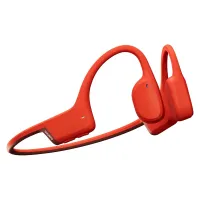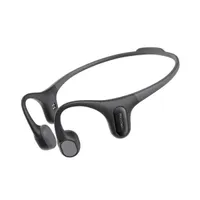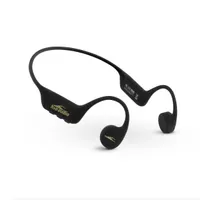Best bone conduction headphones in 2025
Our favorite bone conduction headphones to keep your ears open, tested and rated

The best bone conduction headphones use vibrations on your cheekbones to recreate sound, leaving your ears open, boosting awareness of your surroundings and offering a more comfortable experience if you don't get on with in-ear designs.
But its hard to know how they'll perform until they're actually on your head, so I've put the best bone conduction headphones to the test to help you find a set to suit your needs. And for most people, that'll be the Shokz OpenRun Pro 2.
They're not the cheapest bone conduction headphones, but I found them to offer an upgrade in sound quality compared to most bone conduction headphones, while also being comfortable and long-lasting. If you're after something more budget-friendly, the Shokz OpenRun offer a good level of performance for less.
But these aren't your only options. I've spent hours running, walking, swimming and listening to these open-ear sets to help you find the best bone conduction headphones for a range of activities and budgets.
The quick list
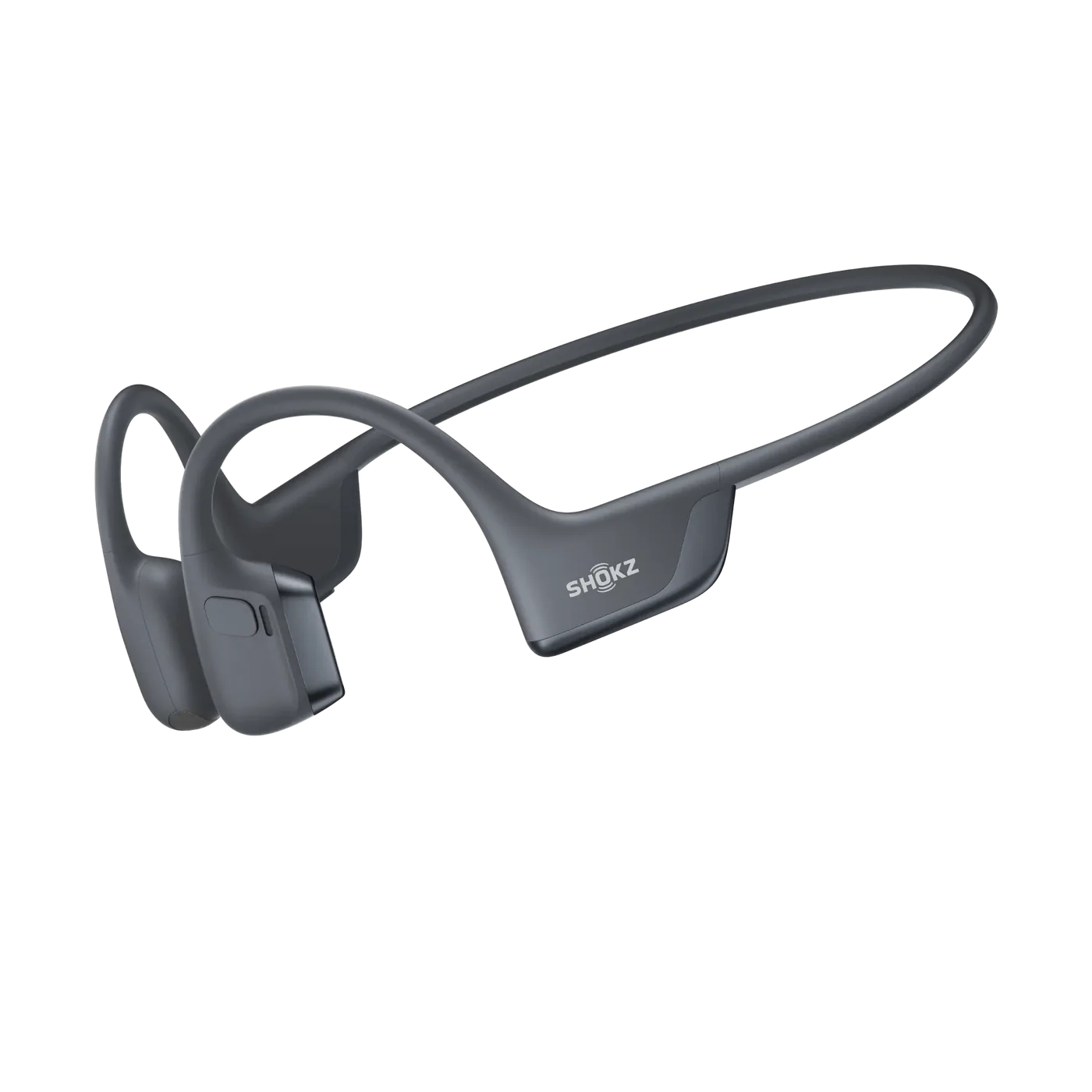
The Shokz OpenRun Pro 2 are the best bone conduction headphones available thanks to their impressive sound quality, long battery life and secure fit for sports. Unless you need swimming headphones or a more affordable option, these are the ones to get.
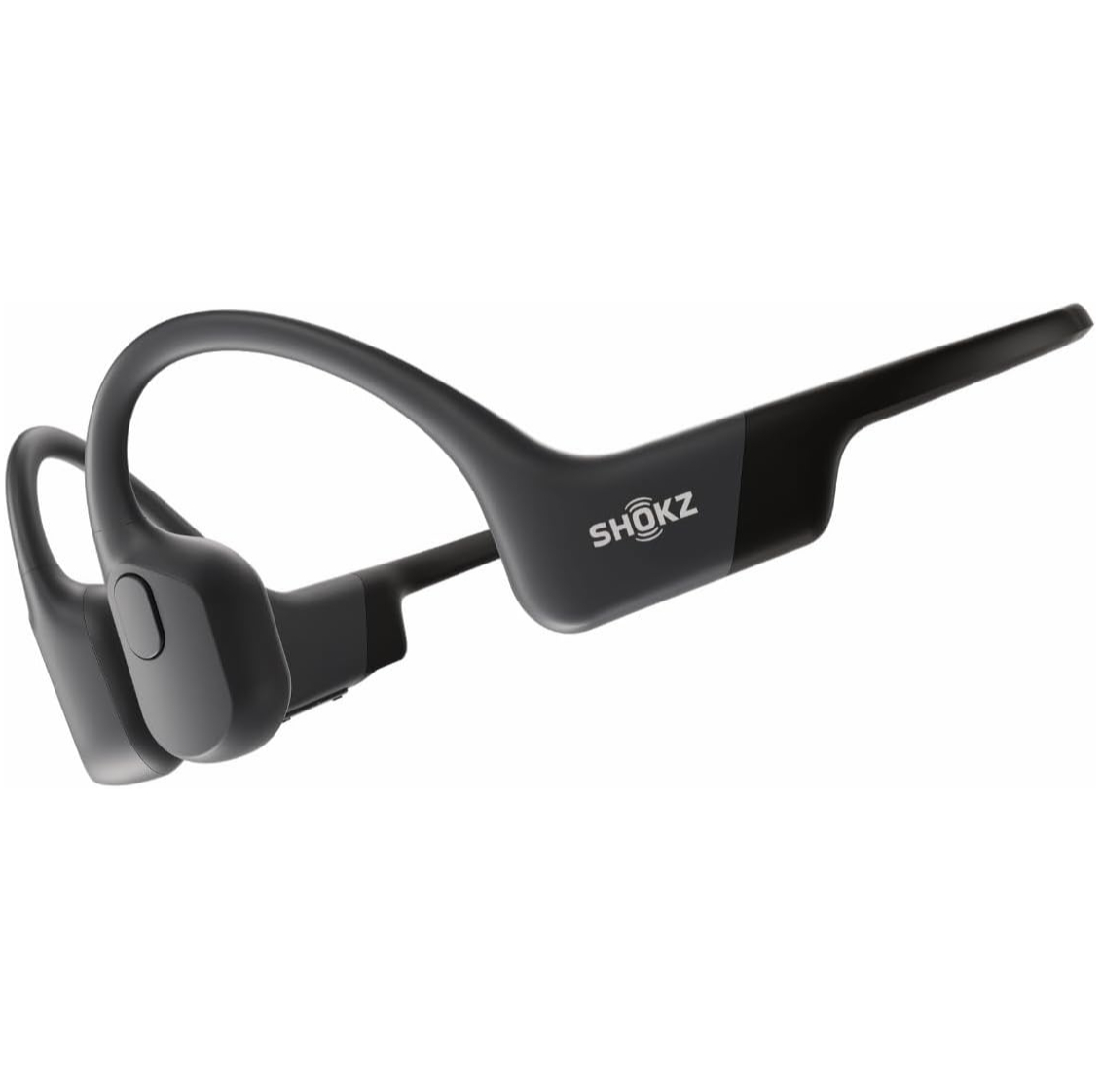
The Shokz OpenRun don't rival the Pro version for sound but still sound pretty good and are more affordable. Their light barely-there weight lands perfectly between comfort and the kind of secure fit you want from a set of running headphones.
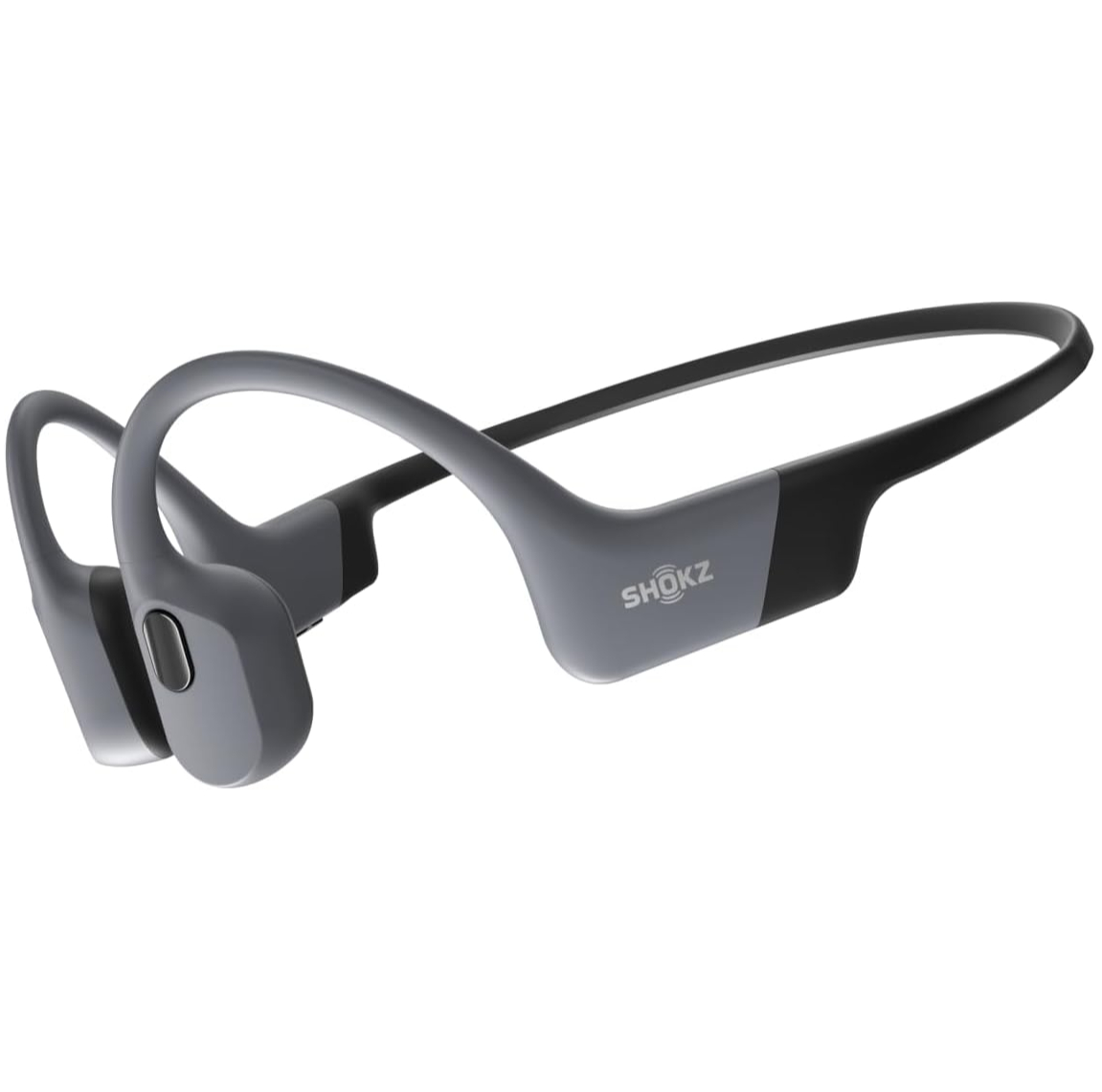
These swimming-friendly bone conduction headphones are IP68-rated and can store MP3s on the device, so you can listen to music phone-free. You get 9 hours of battery, and a well-rounded sound for your money, but they are expensive.
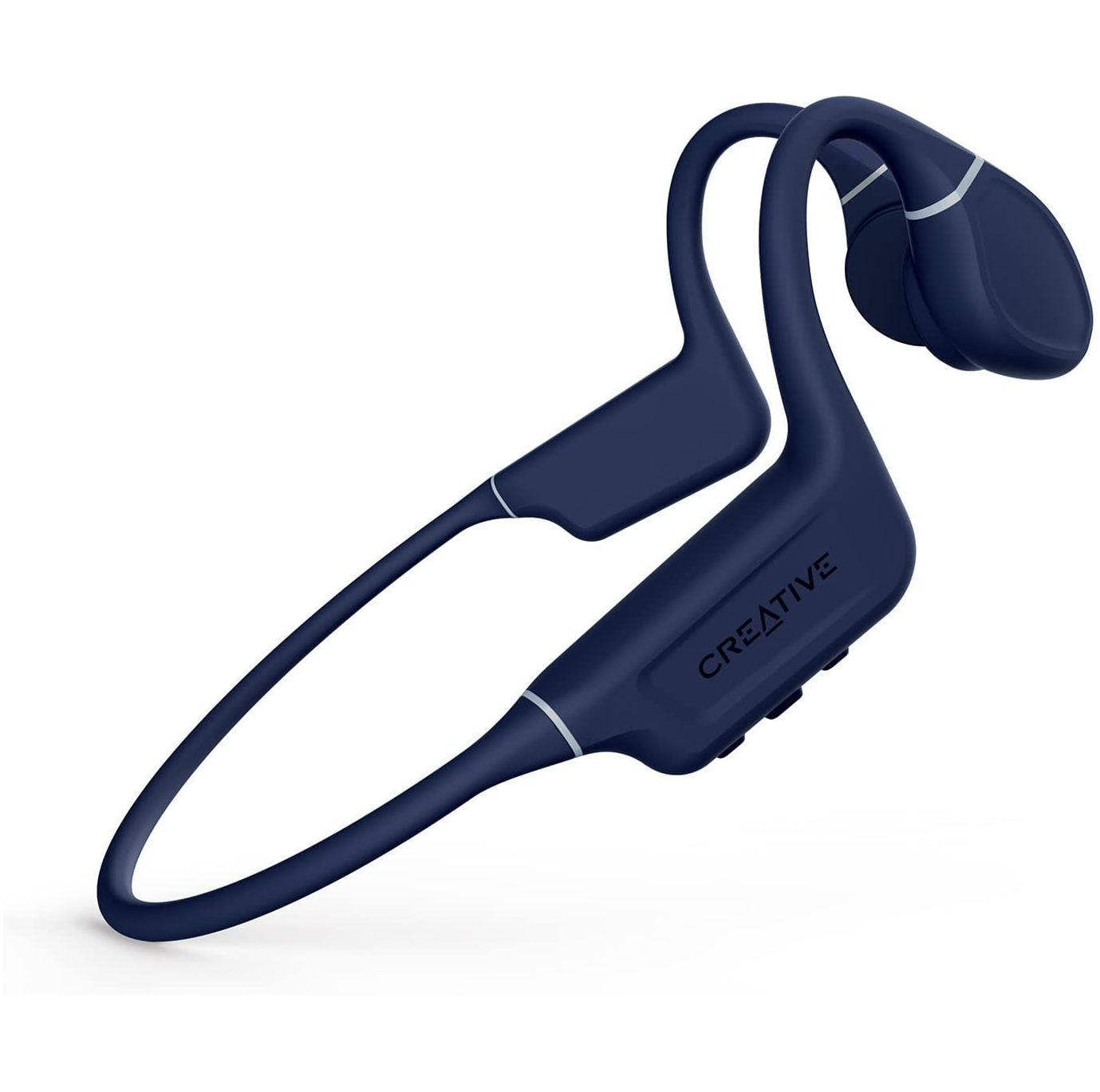
The Creative Outlier Free Pro launched at $129, but have since dropped to $99. That makes them the best budget model around right now and they still perform well with MP3 storage as well as Bluetooth playback and a fully waterproof design.
The best bone conduction headphones you can buy right now
Why you can trust Tom's Guide
Best bone conduction headphones overall
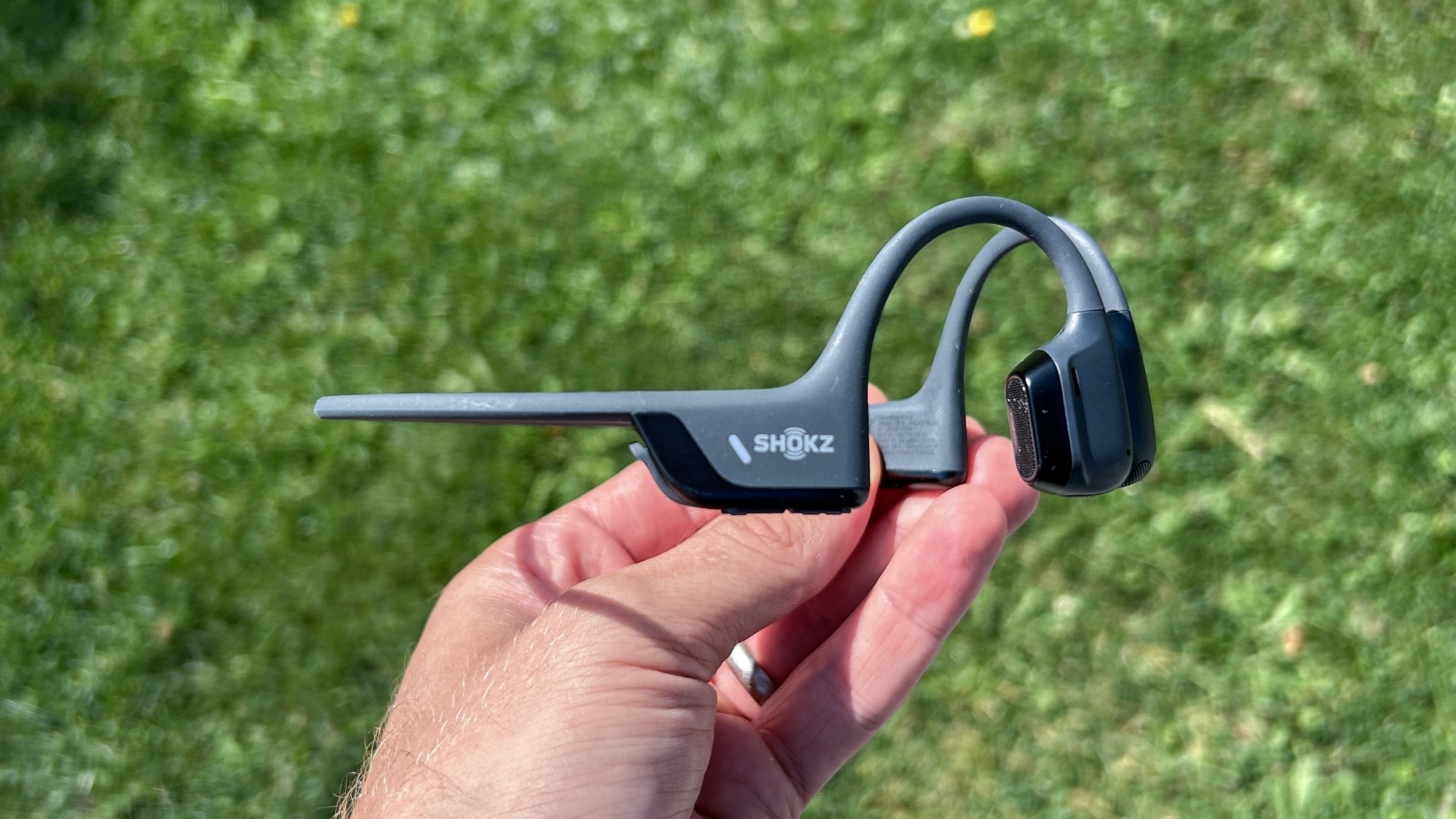

Specifications
Reasons to buy
Reasons to avoid
The Shokz OpenRun Pro 2 are the best bone conduction headphones for sound quality I’ve tested, with the new DualPitch technology improving the bass in particular when compared with the original OpenRun Pro and other open headphones.
While they can still be drowned out in very loud environments, the OpenRun Pro 2 are enjoyable to listen to both during and outside of workouts. They come with the reliable and comfortable fit you get from Shokz’s headphones, with the over-ear hooks and headband keeping the OpenRun Pro 2 securely in place during my workouts, which included hundreds of miles of running, plus bike rides, yoga and strength sessions.
There are two size options as well, with the OpenRun Pro 2 Mini having a shorter headband that creates a closer fit around the back of your head — this can be handy when doing exercises where you lie on your back and I prefer the smaller fit myself.
The battery life is also excellent at 12 hours, though I did find this would drop to more like 10-11 hours if you consistently listen to the headphones at the max volume, which was necessary when using them for outdoor runs and bike rides. Even so, the OpenRun Pro 2 outlast all of the other options on this list.
If you need bone conduction headphones for swimming or value MP3 playback then the OpenSwim Pro are a good alternative, and the Shokz OpenRun are a more affordable option that still impressed me during testing.
However, the OpenRun Pro 2 are a step up in sound quality and battery life, and the best bone conduction headphones available right now.
- Read our full Shokz OpenRun Pro 2 review
Best bone conduction headphones for running
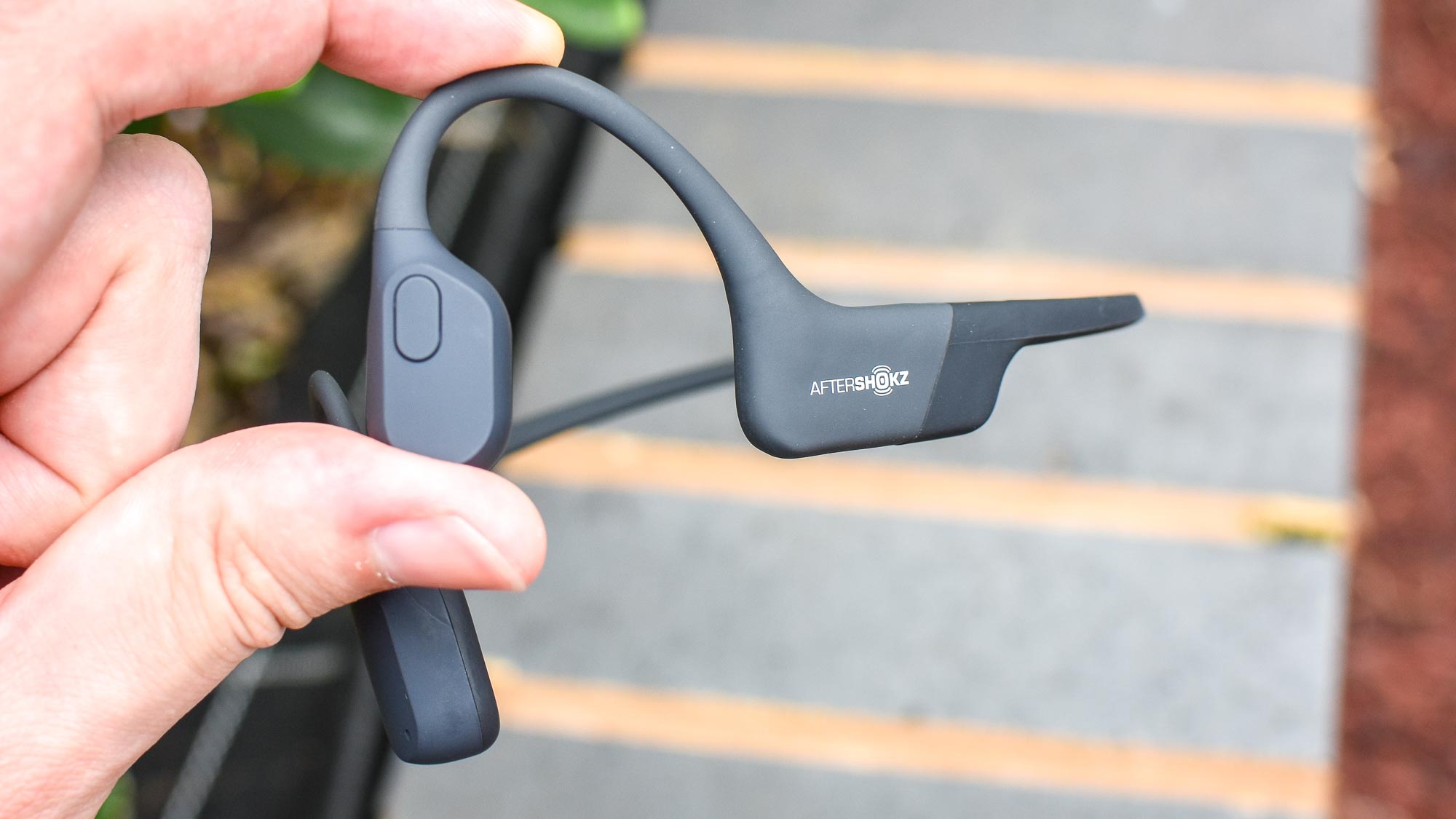

Specifications
Reasons to buy
Reasons to avoid
The Shokz OpenRun were originally called AfterShokz Aeropex, and make a great introduction to the Shokz range of bone conduction headphones. They come in four dual-color options, including blue eclipse, cosmic black, lunar grey, and solar red, and two fits, with the smaller Mini being my preferred option.
They're fraction lighter than the OpenRun Pro 2, and the barely-there weight lands perfectly between comfort and the kind of secure fit you want from a set of sports headphones. They are comfortable to wear for hours at a time — handy for marathon or endurance training — and I've logged more miles on the run in these headphones than any bone conduction buds I've tested.
The sound quality is not as impressive as that of the OpenRun Pro 2, and I found that the OpenRun headphones can get drowned out in noisy environments, but they'll still help to keep you motivated during your runs and work well for podcasts in my experience.
- Read our full Shokz OpenRun review
Best bone conduction headphones for swimming
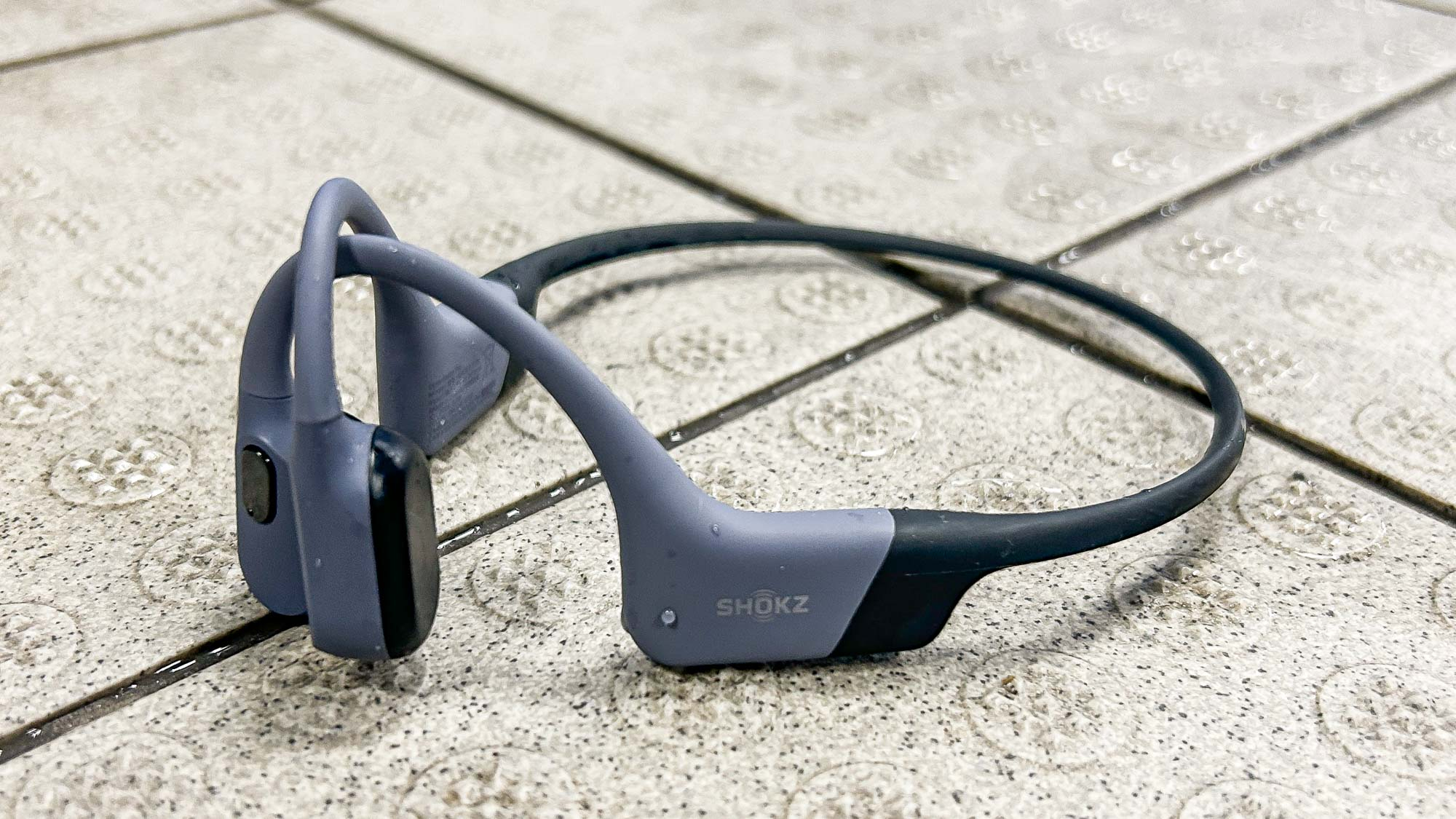

Specifications
Reasons to buy
Reasons to avoid
The Shokz OpenSwim Pro are almost a mash-up between the OpenRun and OpenSwim bone conduction headphones, blending the best features of each set to create a premium model that can handle swims, outdoor runs, and sweaty workouts.
There are two audio modes, including a dedicated swimming option which adjusts the output to make sure you still get good audio quality even while in the pool. I didn't find that it changed the quality much, so generally stuck with the standard mode even while swimming, but I was impressed with the sound in the water overall.
The nine-hour battery life should easily see you through most sessions, even extended runs, although I was disappointed that the battery drops down to six hours if you listen to local MP3s downloaded to the device rather than using Bluetooth
If you train in noisy environments, the open-ear design means there's no noise cancellation, so you'd need a set of the best sport headphones instead to avoid your audio getting drowned out. But this isn't unique to the OpenSwim Pro, which are easily some of the best bone conduction headphones available right now.
- Read our full Shokz OpenSwim Pro review
Best budget bone conduction headphones

Specifications
Reasons to buy
Reasons to avoid
The Creative Outlier Free Pro offer some of the features from more premium bone conduction sets — like an IPX8 rating for water resistance, 10 hours of battery and onboard music storage — but for less than models from Shokz and others.
On paper, this would help them outrank the competition, but unfortunately they don't sound as good as the others. The sound isn't terrible, but the audio reproduction was noticeably less clear than on models like the Shokz OpenRun.
It's a shame as well, since the onboard storage supports a variety of formats, not just MP3. So, you can upload FLAC, WAV and APE files if you prefer high-resolution audio, but you won't get playback that really reflects the detail in those larger files.
The IPX8 rating makes them fully waterproof for swimming so you can use that storage to listen to audio in the water, even if you will get less impressive sound than you do from the Shokz OpenSwim Pro.
As most sets of bone conduction headphones come in between $100 and $200, the model you get will likely depend on your budget and how often you plan to wear them. The Outlier Free Pro are a great budget-friendly set that are available for under $100, so if you're not too worried about sound quality they are better value for money than others.
- Read our full Creative Outlier Free Pro review
Also tested
The team at Tom's Guide are constantly testing headphones to make sure that the ones recommended are truly the best bone conduction headphones worth your money. But that means there will be some that don't quite make the cut.
So, if you're after more options, these are the bone conduction headphones that have been reviewed but didn't make the list.
Suunto Sonic
Suunto's range of bone conduction headphones is growing fast and the Sonic are a solid alternative to the Shokz Openrun especially as they are now often in sales.
Read our full Suunto Sonic review
Mojawa Run Plus
These are a great alternative to the Shokz OpenSwim Pro. as they're also IP68-rated, so you can wear them while running, working out, or swimming. The sound quality is good, but they lost a few points as they didn't fit that well around a swimming cap, and the battery drained quickly at higher volumes.
Read our full Mojawa Run Plus review
H2O Audio Tri 2 Pro
These IPX8-rated waterproof bone conduction headphones are a great option for swimming, and they have onboard storage for 8GB of music. It's an interesting package, but the price puts them at the same cost as the superior Shokz OpenSwim Pro, which I'd recommend over these.
Read our full H2O Audio Tri 2 Pro review
How to choose the best bone conduction headphones for you
Before you decide on a pair of bone conduction headphones, there are a few factors to consider, aside from the way they transmit audio. Some sets have adjustable headbands to help you find a more comfortable fit, while others come in multiple (and often vibrant) colors to match your aesthetic.
One of the most important features is the degree of water resistance on offer, and this will depend on how you want to use them. For swimming, you need waterproof sets with an IPX8 rating, but for sweaty sessions and rainy outdoor walks and runs, you can opt for a pair with a high-degree of resistance around IPX4 or higher.
Of course, as your ears are left untouched with bone conduction headphones, you won't get the same experience as with the best workout headphones, which have noise cancellation and can block out the environment around you until you switch to a transparency mode to keep tabs on your surroundings.
Though that doesn't mean you have to compromise on the audio quality. Some pairs focus on bass-heavy performance and are ideal if you like to listen to (or train with) dance or tracks with an intense lower end. Others, meanwhile, are optimized for more general performance, so they'd be good for music and podcasts.
How I test the best bone conduction headphones
Every pair of bone conduction headphones has been used over the course of several weeks including multiple workouts. This allows the tester to both gauge the performance across a mix of audio material such as podcasts and music at different volumes, and to see how comfortable they are when worn for extended periods.
I test any waterproof models designed for swimming with pool swims, and I make sure manufacturer claims about battery life and Bluetooth range are accurate. Build quality, the ease of setup and any control schemes — including those involving an app — are also judged.
FAQs
What is the best brand for bone conduction headphones?
Shokz currently dominate our round-up of the best bone conduction headphones and it is the most well-established brand in the area, having originally led the charge with the technology under its previous name of Aftershokz.
There are many rivals who seek to undercut Shokz on price though, with NANK (formerly Naenka) and Haylou both being good affordable alternatives, and Suunto is a brand to watch for bone conduction headphones as its range is growing fast.
What are the negatives of bone conduction headphones?
The main drawback with bone conduction headphones is that they don't sound as good as in-ear, over-ear or even open buds. The best of them do sound good, but they can't offer the power and depth of more traditional headphones.
In addition, while the open design is great for staying aware of your surroundings, that is not a positive when you're travelling or seeking to block out external noise. In loud environments, it can be hard to hear your audio.
Bone conduction headphones also have a headband design that hooks over the ears, which can make them less convenient than individual buds that you can only wear one of at a time.
Finally, some people don't like the tickling sensation you get on your cheeks from bone conduction headphones, especially when you turn the volume up to a high level. Personally, I quite enjoy it, but it's something you obviously don't get with in-ear buds.
What's the difference between bone conduction headphones and open headphones??
Bone conduction headphones leave your ears clear and deliver sound through vibrations against your cheekbones. Open headphones are an increasingly popular option that also don't block your ear canal, but instead position a speaker near it to play sound in a more traditional way.
The advantage of open headphones is that they can offer better sound quality than bone conduction, and a wider variety of designs. Bone conduction headphones are still better for awareness though, as open buds drown out more external noise in my experience.
What do bone conduction headphone IP ratings mean?
Your electronic devices are valuable, so you want to be sure that they won't accidentally break if they get splashed with water — that's what IP ratings are for.
Most manufacturers test their devices for Ingress Protection (IP) and the resulting rating (IPXY) is a measure of how hardy the unit is when it comes to dust and water.
The first digit refers to protection from solid materials, like dust and sand, and is represented by a number from 0 (no protection) to 6 (full protection). However, you'll often spot that the IP rating is shown just as X for this area — this shows the company hasn't actually tested it for protection.
The second digit is for water protection, and is the more common of the two. Phones, smartwatches, and headphones are usually tested for water resistance, ranging from no protection (0) to full waterproofing (8).
So, for bone conduction headphones, you'll want to make sure that they'll be able to withstand the environment you'll use them in. If you plan for some light indoor use to work out, an IPX4 rating for sweat resistance might do.
But for outdoor runs, where there's always the potential for rain, an IPX7 rating or above might be best. However, if they're exposed to more than the rating allows, that doesn't mean they'll immediately break, but it increases the risk.
Though because of the design, bone conduction headphones are often pretty durable and resistant to wet conditions. Unlike standard headphones, there are no audio drivers or speakers to get damaged, and all the electric components are stored inside the device.
Can you hear better with bone conduction headphones?
If you're wondering if you can hear better with bone conduction headphones compared to more traditional in-ear designs, the answer is yes. That's the premise for this form — keeping your ears open so you can stay aware of your surroundings.
By vibrating the areas near your ears, the headphones recreate sound, but only for you to hear. So this avoids generating a lot of noise for everyone else, but also means you get a speaker-like experience, where the audio is at the forefront, but you can still hear what's going on around you.
However, this approach does mean that there are no on-board microphones covering the exterior to pick up sound for noise cancellation, as you'd find on many of the best workout headphones.
This is purposeful (the point of bone conduction headphones is to not block out noises) but means that there's no way to repurpose the mics to boost background sounds, a technique that Apple has used with the AirPodsPro 2 to turn its earbuds into hearing aids.
Get instant access to breaking news, the hottest reviews, great deals and helpful tips.

Nick Harris-Fry is an experienced health and fitness journalist, writing professionally since 2012. He spent nine years working on the Coach magazine and website before moving to the fitness team at Tom’s Guide in 2024. Nick is a keen runner and also the founder of YouTube channel The Run Testers, which specialises in reviewing running shoes, watches, headphones and other gear.
Nick ran his first marathon in 2016 and became obsessed with the sport. He now has PBs of 2hr 25min for the marathon and 15min 30sec for 5K. Nick is also a qualified Run Leader in the UK.
Nick is an established expert in the fitness area and along with writing for many publications, including Live Science, Expert Reviews, Wareable, Coach and Get Sweat Go, he has been quoted on The Guardian and The Independent.
- James FrewBuying Guide Editor
